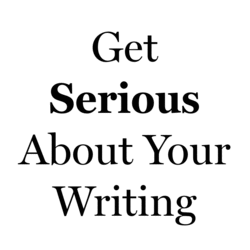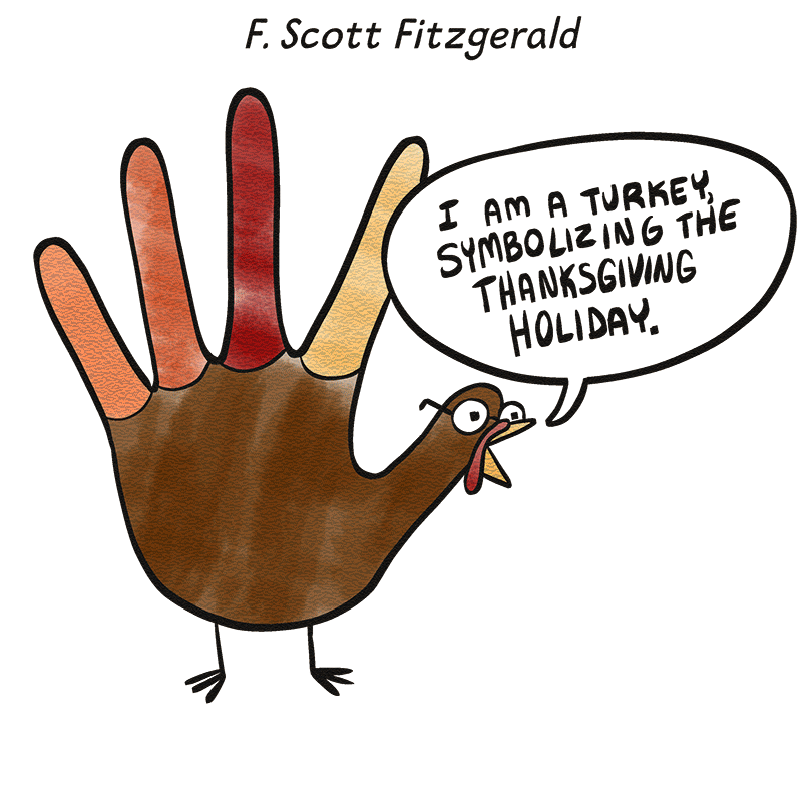Interviews
Does Any Book Really Need to Be 1600 Pages Long?
Two writers discuss Matthew McIntosh’s four-pound postmodern novel ‘theMystery.doc’

Double Take is a literary criticism series in which two readers tackle a highly-anticipated book’s innermost themes, successes, failures, trappings, and surprises. In this edition, Tobias Carroll and Bradley Babendir explore Matthew McIntosh’s metafictional epic, theMystery.doc.
A book of this size demands to be noticed. There’s something so jarring and compelling about publishing a 1600 page monster of a novel in 2017 — a time when most novels are trimming down and narrowing their focus — to a perhaps an intentional lack of media coverage. Yet Matthew McIntosh lays the foundation with the necessary metafictional suspects: multiple concurrent narratives, typographical decoys, computer code, television stills, and even some pop-up ads. The end result is a book that’s equal parts puzzle and brick. With little else like it, theMystery.doc’s unique stature alone could be worth the price of entry.

Tobias Carroll: There is a point, 990 pages into Matthew McIntosh’s 1660-page theMystery.doc, where a character loses their mind while pondering the size and scope of a theoretical novel that sounds a whole lot like the one in front of us. Reading that, I was alternately amused that McIntosh was acknowledging the elephant in the room — this book, a supposed giant book about literally everything — and frustrated that we were getting metafictional and self-referential humor at a point when most books have begun to wrap things up.

That blend of admiration and frustration characterized my reaction to theMystery.doc pretty well. It’s about a host of things: a writer who wakes up with no memory of his life until that point, an online chat where at least one of the participants may be a computer program, a woman trapped in the World Trade Center on September 11, the nature of God. It’s also a genuinely experimental work — maybe the literary equivalent of a sprawling independent film like Chris Marker’s Sans Soleil — that does wholly unorthodox things with images and spacing.
Sometimes I felt as though I was tapping into something transcendental; at others, I felt like I was literally wrestling with it. So I’m curious to know what you thought.
Bradley Babendir: My reaction to the book is mostly in line with yours: awed frustration. I’m glad you pulled out that specific metafictional moment (in a book full of them) because I found it to be disappointing too. There was something so typical about it that left me a little cold. In one sense, I agree: I was comforted by McIntosh’s acknowledgement of its hubris. In another, the acknowledgement fell flat, almost redundant.
I don’t know if you had a physical copy of the book or not, but the size and scope of it is self-evident. It is gigantic. It is physically difficult to read because it is so heavy. It’s over four pounds. Without getting too abstract: What does that mean? What does it mean to have the reader physically wrestle the book to be able to read it? My initial thought: The exhaustion of reading it was essential to many of the book’s powerful and beautiful moments. The book is many things all at once, and, to make the framing here slightly more specific: What parts were working best for you? I thought the chat sequences with the computer program (or programs) was the most engaging and exciting to read. The more conventional narrative — the sections about the author — were a little tougher to get through.
What does it mean to have the reader physically wrestle the book to be able to read it?
There isn’t really a level of interest on a specific subject that’s going to make someone who has a visceral, negative reaction to a book of this size want to read it. Openness to the size would be the most important piece, and I think that in the eyes of most readers, that will be, more so than its content, what ultimately defines it. Luckily for McIntosh, the ambition of his project matches well with the general ambitions of a reader who is drawn to something so massive.
TC: In terms of the “about everything” aspect of the book, I’m curious about your take on the more metaphysical parts. Initially, I took the title as a more straightforward riff on what a mystery is — and that’s certainly the case as well, given the somewhat classic setup of a man awakening sans memory. McIntosh’s metaphysical stakes seem a lot larger, and they don’t really ever contract over the course of the book. Did you also find this to be present? Also, did you come away with any greater understanding as to, for lack of a better phrase, the universe according to the Mystery.doc?
BB: I should admit that invocations of Christianity are something I tend to struggle to understand, having been raised Jewish. I often end up with a more surface-level of understanding because I’m never quite sure I have enough knowledge to really “get it.” Still, I found a lot of the invocations of religion compelling, like the speech or sermon beginning on page 1207 that ends with a reassuring sentiment offered to a character for whom some of “language will be lost.” McIntosh writes, “…the bible says in Romans 8, that he speaks in ways that when we can’t even articulate, God still gets said what he wants to say.” I don’t know the scripture and I don’t really believe in God, but that struck me as a beautiful idea in the context of this book.
‘The Book of Disquiet’ Is the Weirdest Autobiography Ever
I think the more general question of metaphysical stakes is a wonderful one. I grew to understand “the mystery” differently over the course of the book. I don’t know if I have a greater understanding of the world according to theMystery.doc, though I think that if I did, I might have missed the point. A lot of this book is about alienation from “reality” which, to use Phillip K. Dick’s definition, “is that which, when you stop believing in it, doesn’t go away.” That’s worth considering alongside theMystery.doc since McIntosh plays with this notion. For example, large portions of the book appear redacted. Whole pages are redacted, and there are pages almost entirely redacted with a word or two that are not. I’d like to know how you considered those passages. If I assume that McIntosh is referencing the type of documents that are often portrayed with redactions — like secret government reports — then what is redacted is most important and most sensitive. Then again — maybe they’re just black lines? As in, what’s the point? For me, the metaphysical stakes emanated from the structure and style as much as the content, though with a book like this it’s not necessarily possible to separate each, which just adds to the puzzle.

TC: I read the redactions in a couple of ways. On one level, it seemed of a piece with McIntosh’s attempts to fold in as much of early-21st century American life into this narrative as he possibly could; like it or not, I feel like redacted government documents have become associated with George W. Bush’s presidency in an inexorable way. On that level, it reminded me of Jenny Holzer’s Redaction Paintings, where the raw materials of the abuses of the War on Terror were turned into art without necessarily losing their potential to make a sociopolitical point. I also wondered if these didn’t have certain qualities of erasure poetry to them as well, which would also be in tune with McIntosh’s way of working in different artistic disciplines and aspects of other media.
Did the use of film stills, to an extent that there was a kind of interpolation of cinematic language, mesh interestingly with the rest of the narrative? And what did you make of the moments of linguistic static, where characters ran rampant across the page, but which came off like gibberish? I was reminded a little of how books like Mark Doten’s The Infernal (which also grapples with some of the same recent history), Jennifer Marie Brissett’s Elysium, and Sarah Hall’s Daughters of the North use a kind of random distortion effect in the text to suggest a document that had been somehow corrupt. McIntosh also does that on a much, much, much grander scale, which at times felt a little excessive. This is a book roughly the size of a human head, so excess becomes relative.
This is a book roughly the size of a human head, so excess becomes relative.
BB: I found most of what McIntosh was doing to be emotionally and intellectually compelling. I found a cinematic language and logic emerging as I explored the film stills and photographs. The static had a similar effect on me, in that it became more of a visual experience than a linguistic one. When there are 15 pages filled with mostly asterisks, a narrative meaning inadvertently looms but it also calls attention to itself, to look at it. I found it all so complicated and worthy of inspection as I was experiencing them and that is an argument in their favor. At the same time, their place in theMystery.doc’s narrative is much less clear to me.
Did you feel like this book is a coherent? I found it aimless. Structurally, it’s unpredictable and that — of course — becomes part of the reading experience. Eventually the book establishes its own logic. Most importantly, this was incredibly emotionally coherent for me, in that I think the book has an affective emotional arc that is, both frequently and ultimately, quite deliberate and moving. Do you agree?
TC: I’d agree with you 100% about the novel having an emotional arc that worked, even as some of its components seemed more (intentionally) bewildering. I haven’t sat down and read any interviews with McIntosh, nor have I read his previous novel–which, if the nods to it in this book are to be believed, is much more traditionally-structured than his followup. So I’m curious if he’s intended it as a kind of collage, or if there is in fact a massively complex narrative unfolding that both of us have evidently missed.
Earlier, I’d talked about the sense of this text as a kind of embedded digital work; looking back on it, that’s only increased. The book’s title is a filename; the first word we see on the first page (technically page i) is another file name: “foretellcometell.wav.” And the initial structure is such that these different narrative strands—and some of the digital-ish static that surrounds them—are distinct… until they aren’t. By the end they’ve started mashing themselves together and recombining into different forms, which seems like a very 21st-century thing, from popup links on video clips on YouTube to situating a digital animation in the middle of a news article. I wonder if this might not also be one of the themes of the book: the way that, over the last decade or so, the lines between different forms of media have become increasingly blurred, and the narrative potentials that that might offer. The fact that a different version of the title page turns up on page 1565—that this has all been a kind of prelude—supports that, in my mind.
Support Electric Lit: Become a Member!
And with that also comes questions of what humanity and authorship mean in this new context: on page 1567, there’s another variation on a chat window conversation that may or may not be between a computer program and a human being. Did you get a similar feeling: that this question of the creation of art in the early 21st century was also below the surface of some of these narrative decisions?
BB: I do get a similar feeling about theMystery.doc’s wrestling with the creation of art in the 21st century. There is certainly an interest in blurring, but I’ve thought about it more in terms of juxtaposition. I read a lot of books on my tablet, and I use the same device to watch movies, play games, send emails, check twitter, and more. This is perhaps not a new revelation but I think it’s the idea that McIntosh is really grappling with. It’s almost like a challenge. He’s asking “does this seem bizarre to you?” and it does when he’s literalized it in his book, but there’s also a reflection in daily life. We are (or at least I am) always switching between words and pictures and videos, all the time. There are writers that grapple with this in different ways but I think that McIntosh’s method is effective and provocative. Everything is available all the time and McIntosh sees the urgency of that and its consequences.
I’d like to draw us toward a larger thematic question about what McIntosh is writing toward. What binds this book together? I think it has a lot to do with the overflowing post-9/11 sadness, paranoia, and anxiety. A lot of the photographs in the book, like the set of the couple dancing, or the set of an American flag, have a paranoid sense of being surveilled; it registers to me, at least, as unsettling.
What binds this book together? I think it has a lot to do with the overflowing post-9/11 sadness, paranoia, and anxiety.
TC: I’m with you on theMystery.doc thematically addressing the national mood in the early years of the 21st century. I think that a lot of what we’ve been talking about taps into that, from the questions of religion posed throughout to the Turing Test-esque rumination on what makes someone human versus a machine to the direct evocation of national symbols and national traumas. To take that a step further, I think there’s a pervasive mood of questioning, from the title onwards–a sense that (perhaps in response to the chaos of American life post-2000 election, post-September 11, etc.) nearly everything that could be taken for granted is now ripe for interrogation.
Part of that is baked into the novel, with the “am I talking to a human or a program” dialogues that recur throughout the narrative being one significant example, along with the narrative of amnesia that’s probably its most familiar narrative element. But there’s also the way the novel makes use of a traditional three-act structure, but constantly subverts it; there’s the way that it appears to be grand literary epic that reads more like a metafictional collage; and there’s the way that the novel’s title evokes a file name–something that can still be edited, something malleable. (See also: Kanye West’s decision to keep updating his album The Life of Pablo after its formal release date.)
So maybe that’s where all of this is going—this is McIntosh’s way of simultaneously channeling the joy and potential of early-21st century American life—where certain rigid hierarchies have begun to crumble, and there’s more freedom to create something new and unclassifiable—alongside the dangers that come along with it, and the feeling that you’re increasingly being watched, whether by governmental agencies or private enterprise.
To an extent, I think McIntosh’s book is one that resists easy categorization or analysis—but I also think there’s a lot more happening in it than simply an arbitrary jamming together of numerous disparate narratives. Even if that was the case, it seems as good a place as any to evoke the collective modern-day American headspace.










